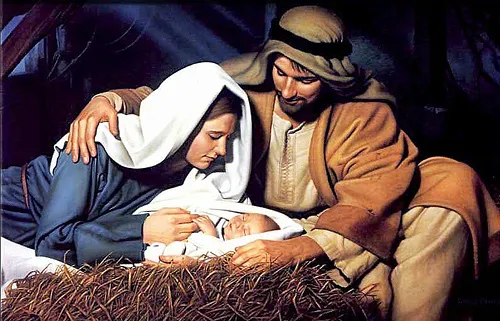When we picture Bethlehem on the night of Jesus’ birth, many of us imagine a serene scene—a peaceful countryside, a bright star, and a quiet manger. But what was Bethlehem truly like on that historic night? Understanding the historical and cultural backdrop of this small Judean town offers a richer perspective on the significance of Jesus’ birth.
1. Bethlehem: A Small but Busy Town
Bethlehem, known as the “City of David,” was a small yet historically significant town about six miles south of Jerusalem. During the Roman census described in Luke 2:1-7, its population would have swelled with visitors returning to their ancestral home. The streets would have been crowded, inns overflowing, and tension running high as families scrambled to find shelter.
For Mary and Joseph, who had traveled nearly 70 miles from Nazareth, this bustling town must have felt both overwhelming and unwelcoming. Their arrival in Bethlehem was likely marked by exhaustion and uncertainty, underscoring the humility of Christ’s birthplace.
2. The Grueling Journey to Bethlehem
The trek from Nazareth to Bethlehem was no small feat, especially for a heavily pregnant Mary. The journey would have taken several days, covering rough terrain, steep inclines, and unpaved roads. They likely traveled with others for safety, as the route was fraught with dangers like bandits and wild animals.
This arduous journey demonstrates the depth of Joseph and Mary’s faith. Despite the physical and emotional challenges, they obeyed the Roman decree, trusting in God’s plan even when the outcome seemed uncertain.
3. Daily Life in a First-Century Judean Town
Life in Bethlehem revolved around agriculture, shepherding, and small-scale trade. Homes were simple, often constructed with stone and featuring a lower-level room for livestock. The “manger” where Jesus was laid (Luke 2:7) was likely part of such a home, not a wooden stable as modern nativity scenes suggest.
Hospitality was a cornerstone of Jewish culture, so the phrase “no room in the inn” is better understood as “no space in the guest room.” Mary and Joseph were likely sheltered among animals in a family home or a cave used for livestock, a humble setting that reflects the accessibility of God’s love.
4. The Star of Bethlehem: A Heavenly Sign

The Magi’s journey was guided by the “Star of Bethlehem” (Matthew 2:1-12), a mysterious celestial event that has sparked centuries of debate. Was it a comet, a planetary alignment, or a supernatural sign? While we may never know for sure, its appearance underscores the cosmic significance of Jesus’ birth.
This divine sign, visible even to distant lands, foreshadows the global impact of Christ’s arrival. It reminds us that God’s plan encompasses the entire world, drawing both the lowly shepherds and learned Magi to the Savior.
5. Shepherds and Angels: A Message for the Humble
Shepherds, often regarded as outcasts in Jewish society, were the first to receive the news of Jesus’ birth (Luke 2:8-20). Their inclusion highlights God’s heart for the marginalized and His desire to make the good news accessible to all.
Imagine the shepherds’ astonishment as the night sky erupted with angelic light. Their humble fields became the stage for heaven’s proclamation, reminding us that God often works in unexpected places and through unexpected people.
6. Birth Practices: Welcoming Jesus into the World
While the Bible doesn’t detail Mary’s labor, childbirth in the first century often involved the support of midwives or female relatives. Given Bethlehem’s crowded state, it’s possible Mary lacked this traditional assistance. The physical and emotional challenges she faced underscore her strength and faith as she brought the Savior into the world.
Jesus’ humble birth in such conditions illustrates God’s willingness to enter into our brokenness and meet us where we are—whether in palaces or mangers.
7. The Impact of Jesus’ Birth on Bethlehem

Though most of Bethlehem likely remained unaware of the Messiah’s arrival, the event set the stage for dramatic consequences. The Magi’s visit to Herod sparked his infamous decree to kill all male children in Bethlehem under two years old (Matthew 2:16-18), bringing grief and fear to the town.
This juxtaposition of divine joy and human tragedy reminds us of the cost of bringing light into a dark world. Yet even in this turmoil, God’s plan of salvation prevailed.
Spiritual Lessons for Today
Understanding the historical context of Bethlehem brings the nativity story to life in new ways. It reminds us that God chose to enter the world in the midst of human struggle, noise, and imperfection. Just as Bethlehem was bustling and unprepared, our hearts can often feel too cluttered to welcome Him. Yet Jesus enters willingly, offering peace and salvation to all who make room for Him.
This Christmas, reflect on the realities of Jesus’ birthplace—not just as a historical event, but as a reminder that God works in the ordinary and unexpected places of our lives.



